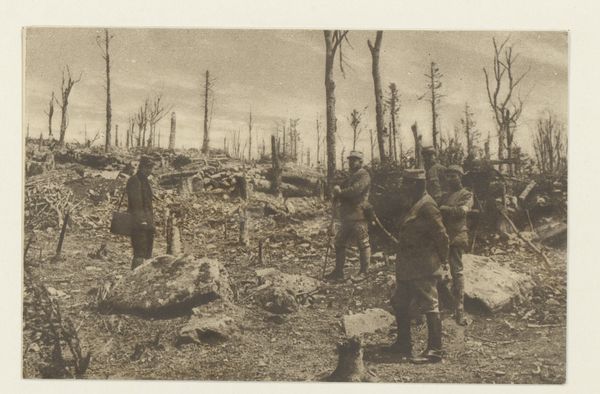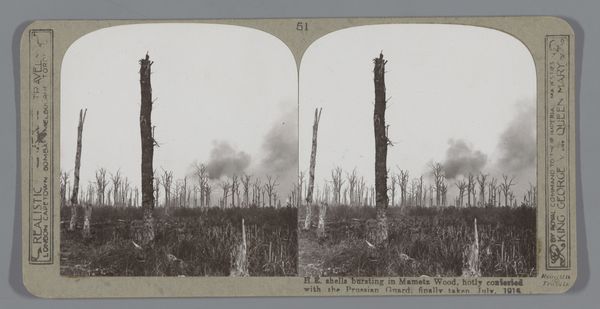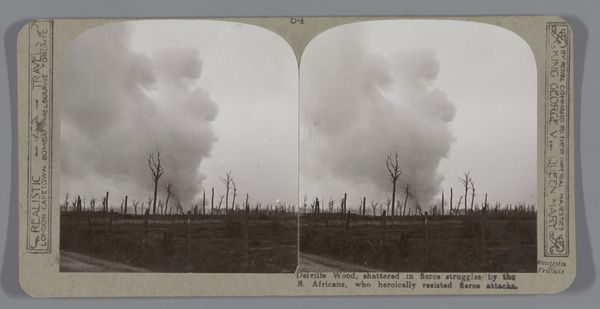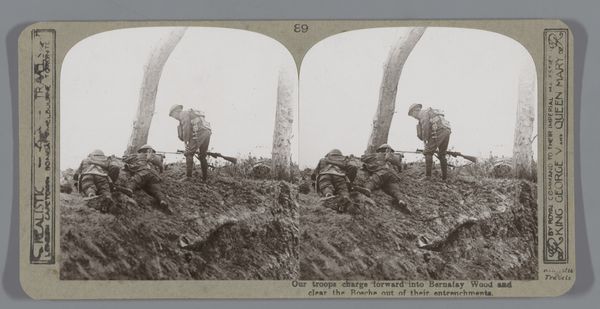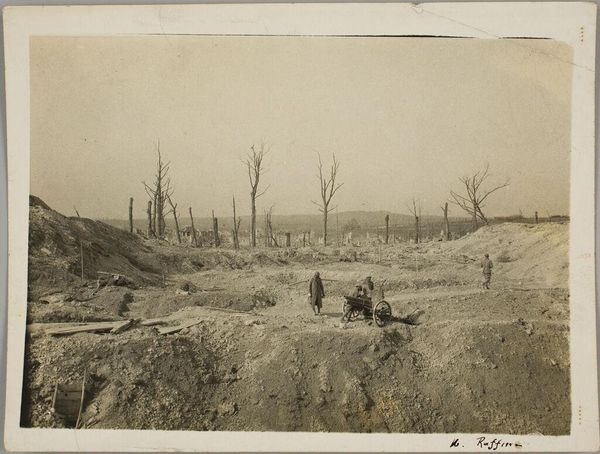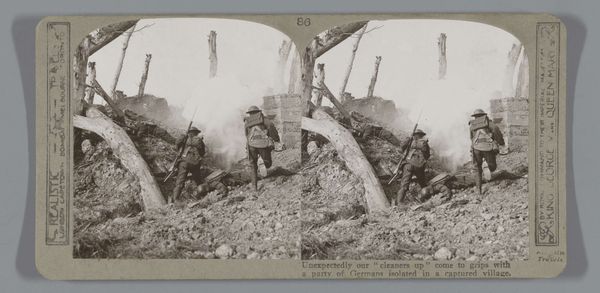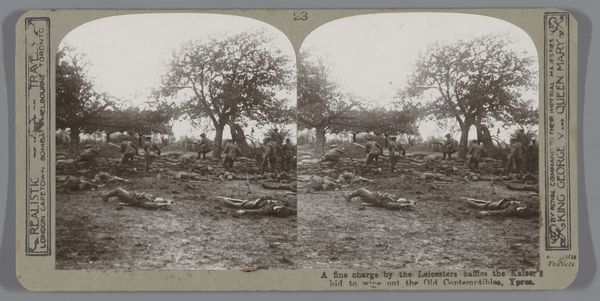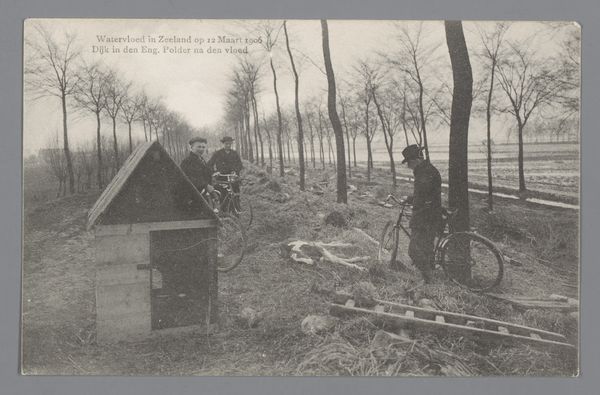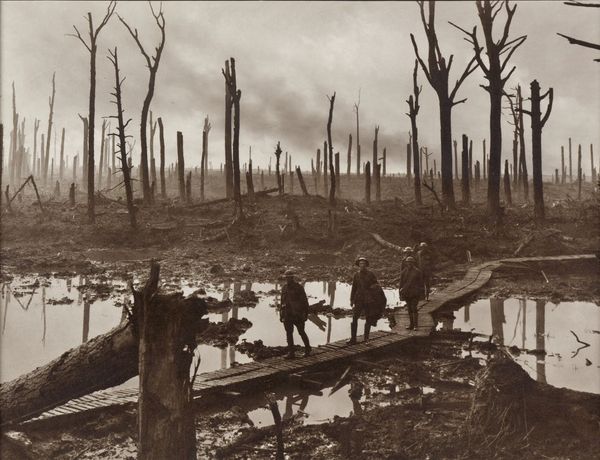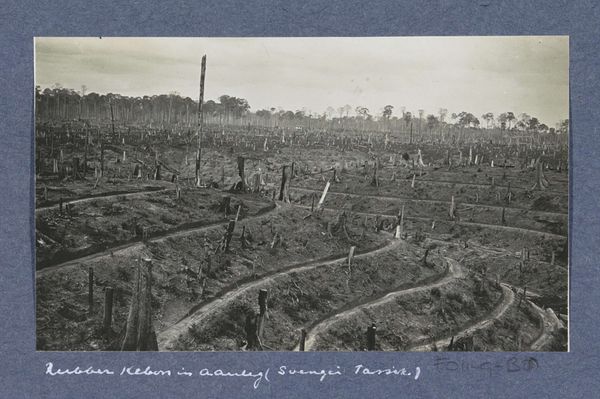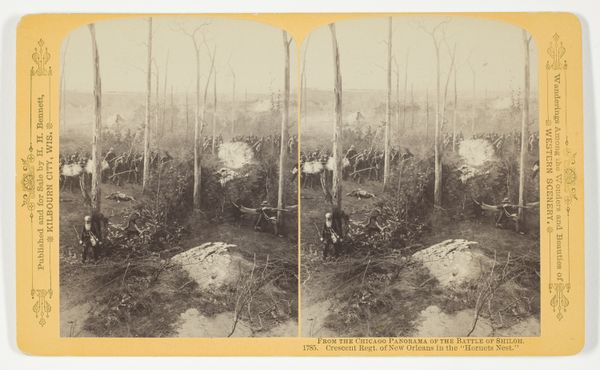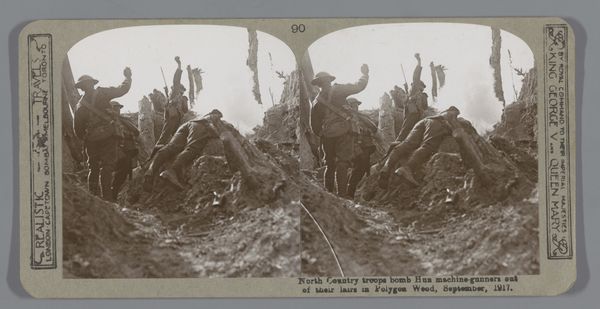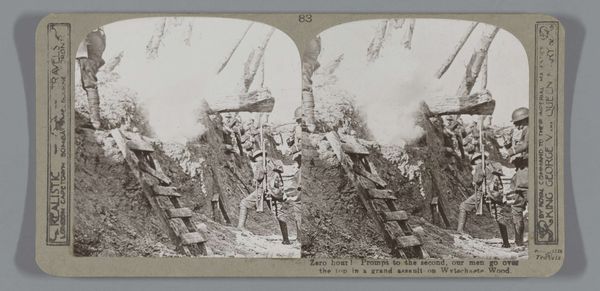
Our troops occupy Houthoulst Forest, the combined British and Belgian attack having ousted the enemy c. 1918
0:00
0:00
Dimensions: height 85 mm, width 170 mm
Copyright: Rijks Museum: Open Domain
Curator: Let's turn our attention to this photograph, "Our troops occupy Houthoulst Forest, the combined British and Belgian attack having ousted the enemy," dating from around 1918. It’s a gelatin-silver print, likely produced for mass consumption given the “Realistic Travels” label. What are your first impressions? Editor: Desolate. It's all ash and upright broken trees and a strange sort of ghostly smoke in the background. A path almost imperceptibly winds through this moonscape and leads to the ghostly soldiers. This bleak landscape speaks volumes of silent trauma. Curator: Precisely. The gelatin-silver printing process allowed for relatively easy reproduction, placing these images in homes across Europe, shaping public understanding of the conflict and maybe sanitizing war's brutality to make it digestible. Think about the political purpose. Editor: War is never easy to process. Sanitization becomes necessary to make war acceptable. I imagine this artist, in some forgotten photo tent somewhere near the battle, witnessing so much death. I see that captured in the monochrome tonality here: a somber commitment to capturing and freezing the tragic consequences that altered his entire world. Curator: It's a delicate balance, right? Mass-produced images of war can function as propaganda, but they also stand as historical documents of landscape transformed through industry and labour, a landscape permanently altered by trench warfare and explosions. And these Realistic Travels sought to normalize it all. Editor: It’s chilling to imagine its original context of mass consumption as mere “travel,” even as this wasteland continues to exude pain and the terrible presence of human violence. Curator: That tension, between its initial purpose and our contemporary reading, is exactly what makes it a compelling object for discussion, an uncomfortable mirror reflecting our relationship with conflict. Editor: Absolutely. Seeing these destroyed places helps one pause and perhaps consider one's own involvement in maintaining war machines that inevitably leave marks on all involved.
Comments
No comments
Be the first to comment and join the conversation on the ultimate creative platform.
